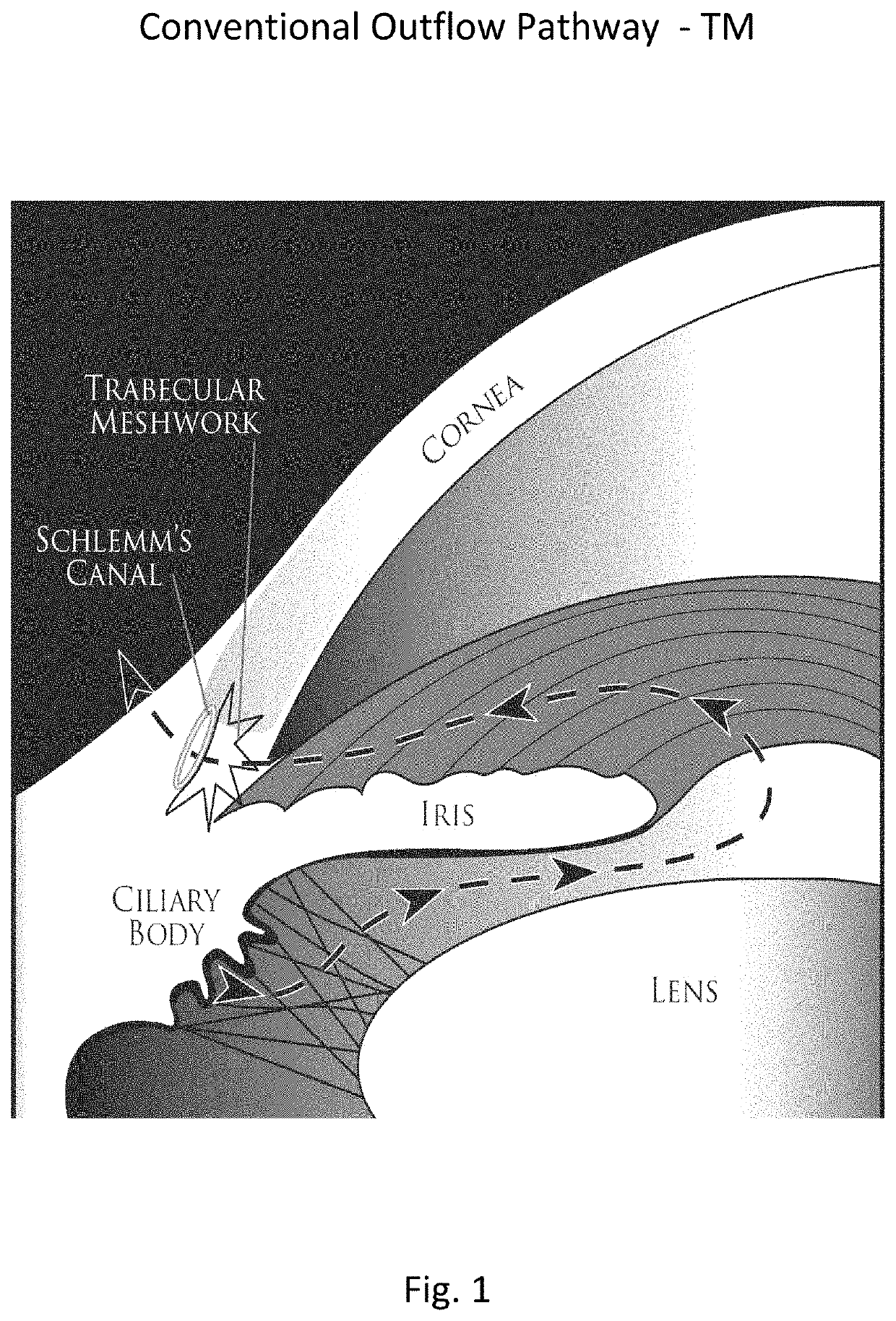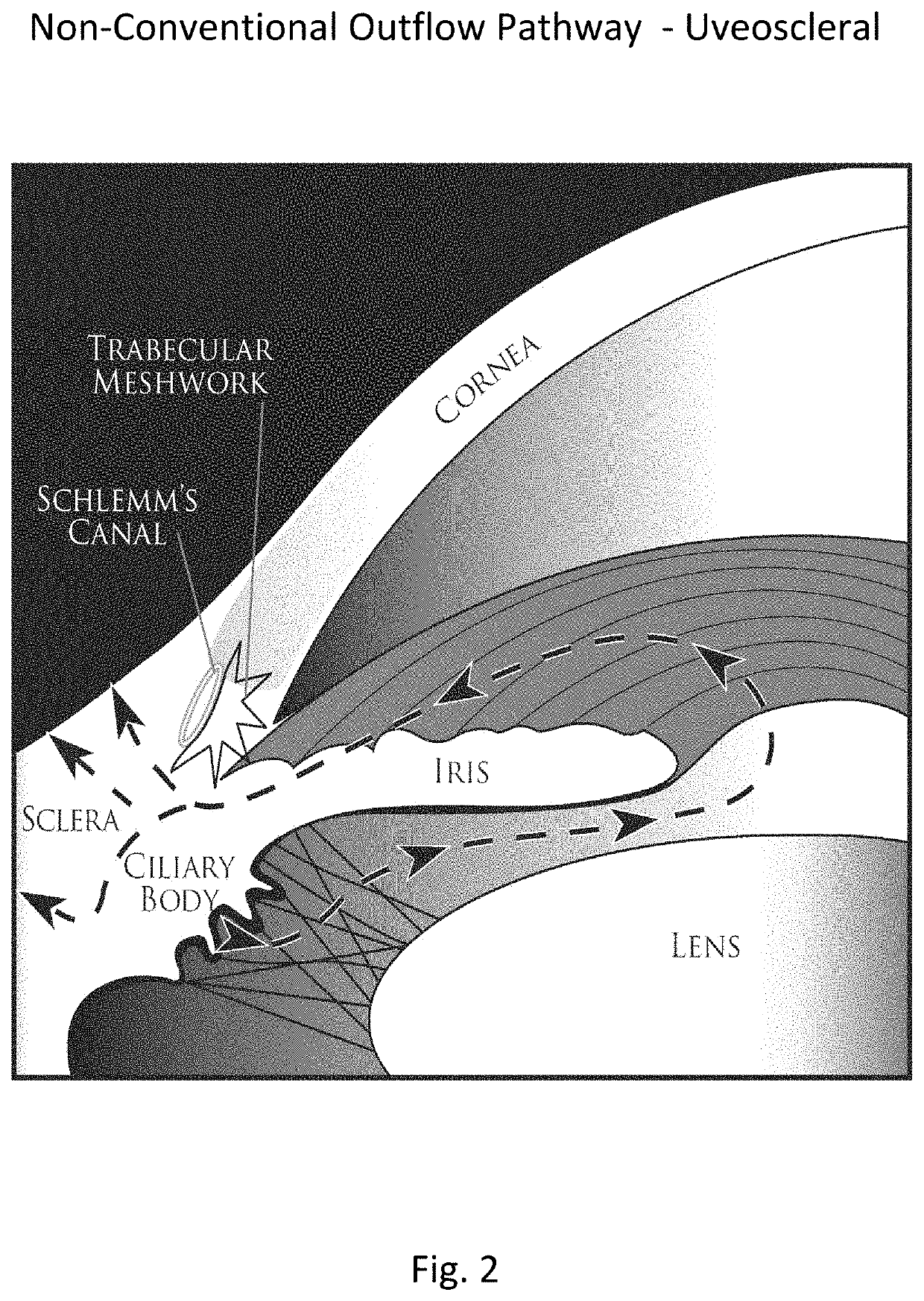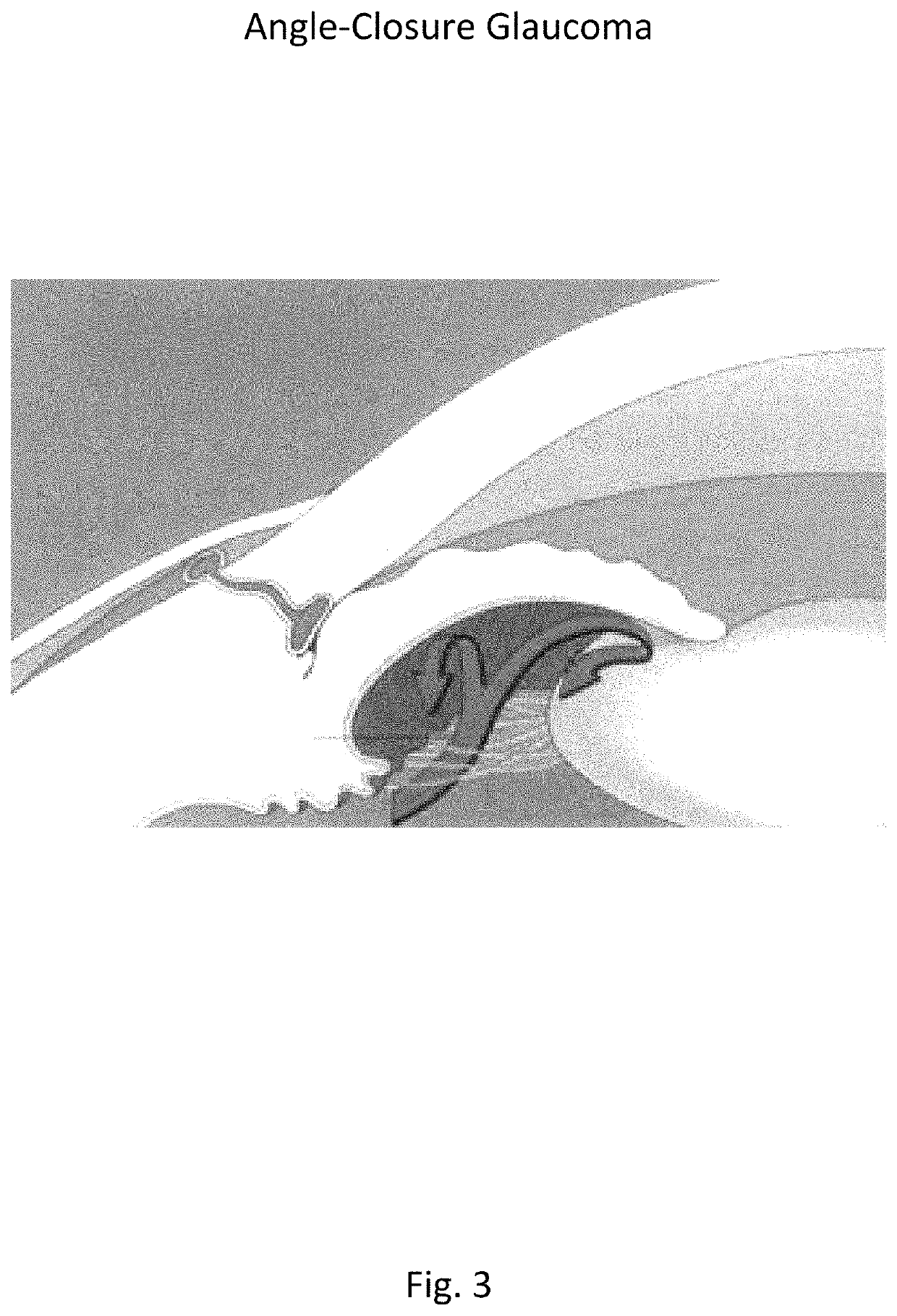Method for laser treatment for glaucoma
a laser treatment and glaucoma technology, applied in the field of laser treatment for glaucoma, can solve problems such as the elevation of iop, and achieve the effects of reducing contact, reducing convexity, and enlarging the drainage angl
- Summary
- Abstract
- Description
- Claims
- Application Information
AI Technical Summary
Benefits of technology
Problems solved by technology
Method used
Image
Examples
Embodiment Construction
[0037]Because vision loss in most forms of glaucoma is related to an elevation in IOP, most glaucoma treatment protocols are concerned with lowering IOP by increasing aqueous humor outflow. In healthy eyes, equilibrium exists between the production and drainage of aqueous humor. See FIGS. 1-2. Disruption of aqueous outflow results in elevation of IOP.
[0038]Aqueous outflow occurs via two pathways, a conventional pathway and a non-conventional pathway, both of which are located at the at anterior chamber drainage angle, where the cornea and the iris meet. The conventional pathway is the trabecular meshwork or “TM” pathway. See FIG. 1. The aqueous humor passes through the TM, across the inner wall of Schlemm's canal, into its lumen, and into draining collector channels, aqueous veins, and episcleral veins. The non-conventional pathway is the uveoscleral pathway. See FIG. 2. It is composed of the uveal meshwork (“UM”) and the anterior face of the ciliary muscle. The aqueous humor enters...
PUM
 Login to View More
Login to View More Abstract
Description
Claims
Application Information
 Login to View More
Login to View More - R&D
- Intellectual Property
- Life Sciences
- Materials
- Tech Scout
- Unparalleled Data Quality
- Higher Quality Content
- 60% Fewer Hallucinations
Browse by: Latest US Patents, China's latest patents, Technical Efficacy Thesaurus, Application Domain, Technology Topic, Popular Technical Reports.
© 2025 PatSnap. All rights reserved.Legal|Privacy policy|Modern Slavery Act Transparency Statement|Sitemap|About US| Contact US: help@patsnap.com



